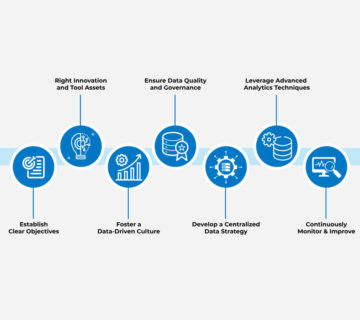Cybersecurity Tool From Homeland Security
There has been an upsurge in ransomware attacks in recent months. The recent attacks on Colonial Pipeline and meat processing giant JBS are just a few examples of major corporations which are highly vulnerable to cyber-attacks. These recent developments largely contributed to the move by the United States Department of Homeland Security to develop a counter-strategy to protect the cyber infrastructure across multiple organizations.
One essential cybersecurity tool developed by The United States Department of Homeland Security is the Cyber Security Evaluation Tool (CSET), an anti-malware cybersecurity tool that provides a systematic process that can be used and assessed by organizations leaders and managers to improve their cybersecurity posture and security management systems. This too is designed to safeguard the industrial assets and organizational data infrastructure, and information networks.
Where To Access The Cyber Security Evaluation Tool (CSET)
Industrial and organizational leaders and critical asset owners can access the CSET tool on Github, where it can be downloaded on a permissive MIT license which is a type of open source license. They can also run the CSET tool on Windows with a standalone installer. The tool is designed with three types of set questions which are introductory, intermediate, and advanced which are aimed to help the target organizations upscale their usage by first beginning at the primary level. From there, they can adopt the best practices in the intermediate section before moving to the more advanced options as they evolve.
How The Cyber Security Evaluation Tool Works
First, an independent team of highly qualified control system engineers, managers, and cybersecurity professionals work together to carry out the assessment process and deploy the tool.
From there, there is a wide selection of unique questions aimed at determining the Security Assurance Level (SAL). Higher SAL means a higher level of the relevant security a specific organization requires and vice versa. The SAL then generates a detailed list of questions and classifies them as either primary, intermediate, or advanced.
This process is the ultimate criteria used to select the relevant cybersecurity standards required by each organization as per the organization’s needs. These standards are further classified according to each specific industry by its sector, purpose of the tool, etc. For instance, one measure may apply to transportation, the supply chains, and nuclear security. The team of cybersecurity experts is further required to capture the organization’s IT infrastructure and data network through a diagram drawing tool. CSET will then generate a list of set questions applicable to the organization as per the information given. The team will then respond to each set of questions, enabling CSET to create a specific dashboard for analysis that contains a wide range of reports highlighting any weak areas within an organization’s security infrastructure.
This CSET tool is one of the many similar cybersecurity tools that many governments across the globe are providing to industries and organizations, especially those listed as critical infrastructure. Critical infrastructure is a vulnerable target for online hackers and cybercriminals. It makes a lot of sense that governments are taking the necessary precautions through this approach.
Overview Of CSET Assessment Program
One key component of the Cybersecurity and Infrastructure Security Agency (CISA’s) risk management objective is to conduct security assessments while partnering with stakeholders in ICS and other critical infrastructure organizations and leaders, third party ICS providers, integrators, Sector-Specific Agencies, other Federal entities and departments as well as SLTT governments, and international organizations.
CISA works closely with these organizations and other partners to assess different aspects of critical infrastructure, which includes cybersecurity controls, control system architectures, and compliance with the security best practices focusing on the availability, resiliency, and integrity of critical infrastructure. It further provides the necessary actions to mitigate and manage potential risks.
CISA assessment tools and approaches aim to boost situational awareness and provide insight, data, and detection and prevention of system threats and vulnerabilities. CISA essential assessment products and services include:
- Self-assessments using the Cybersecurity Evaluation Tool (CSET®)
- Network design reviews
- On-Premise assessments
- Network traffic verification and analysis
The information gathered from assessments programs enables stakeholders to understand the necessary context to develop effective defense strategies and processes for improving their cybersecurity.
Multisector Assessment Reports For The Private Sector
For The Private Sector, the CISA Assessment Team developed a fact sheet to explain better the services and products offered on the assessment for the private sector industries, organizations, and entities. The fact sheet can be accessed here.
For Federal Assessments, the CISA Assessment Team also created a similar fact sheet, especially for Federal entities and departments, to better explain the assessment products and services available exclusively to these entities. The same fact sheet can be accessed here.
Ideally, the Cyber Security Evaluation Tool (CSET®), as a product of the Department of Homeland Security (DHS), was created by cybersecurity professionals under the guidance of CISA. The tool can be accessed here or on GitHub .
Purpose Of The Cybersecurity Evaluation Tool (CSET®)
As a cybersecurity software tool for conducting cybersecurity assessments for various organizations, the CSET offers industrial and enterprise control cyber systems. It serves to help asset owners recognize, intercept, assess and control cybersecurity vulnerabilities within their organizations. This sets the stage for these organizations to enhance their overall cybersecurity posture. The tool serves as a guide through a series of unique questions that apply to network security requirements, regulations, compliance, and best practices. The CSET outcome is a list of recommendations for the necessary improvements to an organization’s cybersecurity posture or industrial and enterprise control cyber systems.
Installing CSET
The Cybersecurity Evaluation Tool is designed with easy to install features that can be used on a stand-alone desktop or laptop. It features various standards from various security and intelligence organizations, including NIST, Transportation Security Administration (TSA), North American Electric Reliability Corporation (NERC), and the U.S. Department of Defense (DoD).
When a user chooses a specific standard that aligns with their organization’s security requirements, CSET provides access to a set of questions that must be answered. The responses to these questions will be used to compare against a chosen security assurance level, and a comprehensive report will be generated recommending the potential cybersecurity improvement.
For more information on cybersecurity, IT services and in-depth explanation on how you can boost your cybersecurity posture, contact our IT professionals at Technijian.



No comment